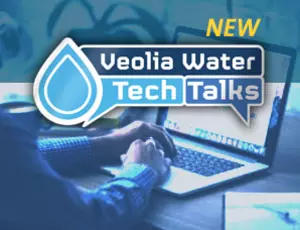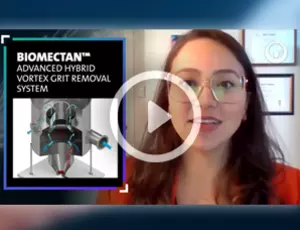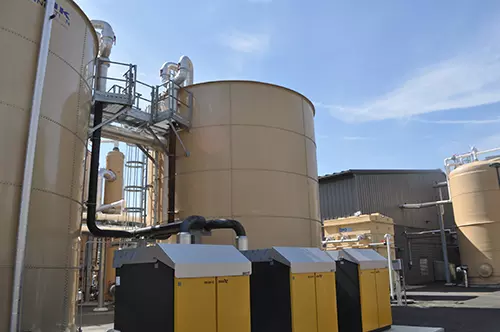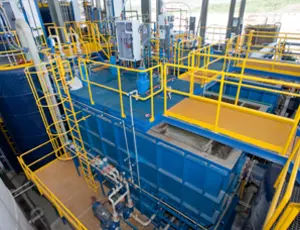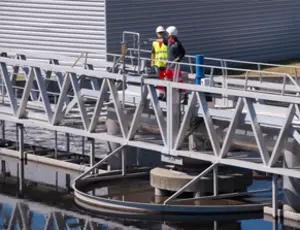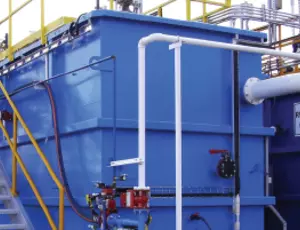Water is a critical element for many industrial companies. The proper management of this resource results in environmental and economic benefits for the industrial facility.
Industrial wastewater treatment requires combining technologies, services, and process expertise to remove contaminants and transform wastewater to be a resource.
What is Industrial Wastewater Treatment?
Wastewater generated from industrial facilities can be high in a variety of contaminants that require removal prior to being discharged to the municipal sewer system or to surface waters. Depending on the industry, these wastewater streams can have high concentrations of metals, BOD (biological oxygen demand) / COD (chemical oxygen demand), TSS (total suspended solids), and other contaminants.
When discussing an industrial wastewater definition, it’s best to understand the process of manufacturing. When water is required in one or more parts of the production process, several forms of contaminants can integrate themselves, polluting the water. To adhere to the compliance regulations set by the competent authority governing the specific industry, plants will need to implement one or more of the different industrial wastewater treatment methods.
Why is Industrial Wastewater Treatment Important?
The goal of industrial wastewater treatment is to clean water to the point that it can be safely reused or discharged back into the environment. Without proper industrial wastewater treatment solutions, companies will not be able to remain compliant with prescribed standards.
Investing in industrial water solutions can reduce a company’s carbon footprint. With global initiatives taking centerstage, aligning a company’s mission to coincide with industrial wastewater management can enhance its brand to the growing eco-conscious demographic.
The Importance of Partnering with Experienced Industrial Wastewater Treatment Companies
The search for a water treatment partner can be challenging. As a result, it is vital to partner with a wastewater treatment company that is experienced in all aspects of wastewater treatment. There are many aspects to consider when identifying the best industrial water solutions or technology for your specific application. Veolia believes that it is important to first understand your business and sustainability objectives and collect data that is relevant to the project. After gathering and analyzing this data, then Veolia’s wastewater experts will recommend a solution that not only helps you meet your industrial wastewater management goals, but will also help your company meet its operational and sustainability goals.
Veolia is able to create a custom-tailored solution using one or more technology products, chemical services programs, or a complete wastewater treatment plant.
Contact an Expert at Veolia Water Technologies Today
Industrial Wastewater Applications
- Bioenergy
- Biological Wastewater
- Clarification/Softening
- Evaporation & Crystallization
- Filtration
- Flotation
- Membrane Systems
- Nutrient Removal
- Odor Management
- Reuse & Reclaim
- Sludge/Biosolids
- Utility Water Treatments
- Wastewater Treatment
- Water Treatment Chemicals
- ZLD Solutions
Industrial Wastewater Services
- Aftermarket & Spare Parts
- Automation & Control Systems
- Chemical Services
- Digital Water Services
- Lab Services
- Mobile Water Services
- Operational Services
- Pilot Testing
- Water Audits
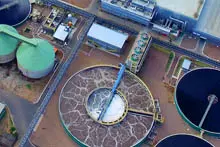
Sources of Industrial Wastewater
There are extremely few industries that don’t produce some variety of wastewater. Many industrial wastewater treatment processes and management services have been developed to treat the contaminants found in wastewater. Without the proper industrial wastewater treatment measures in place, rivers, and other water sources’ biodiversity can be jeopardized. Additionally, there may be economic or operational benefits by treating wastewater onsite, versus sending wastewater to the POTW (publicly owned treatment works).
A few of the most prevalent wastewater-intensive industries include:
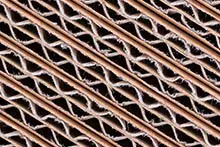
Pulp & Paper Production
The paper industry is one of the most water-intensive, with by-product causing a significant elevation in BOD and COD. The mass of amounts of water needed to create paper pulp from fibers mandates the need for a secure industrial wastewater treatment infrastructure. As pulp can be derived from cellulose, trees, and recycled paper, the contaminants can vary. These multitudes of pollutants mean that innovative tactics need to be implemented to reduce the industry’s overall water footprint. Currently, one of the most cost-effective methods of industrial wastewater treatment in the paper industry is to reuse as much of the water as possible, but also ensuring the final wastewater treatment facility is able to ensure the effluent meets regulatory limits for BOD/COD, TSS, pH, and nutrient levels.
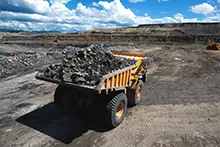
Mining
The mining of ore, minerals, and precious gems produces vast amounts of wastewater annually. Chemical treatment and technological advances have helped alleviate the strain on the environment by allowing minerals to be extracted from water streams, reusing wastewater, and treating mining sludge.
Click Here to Learn More about Offerings for this Industry
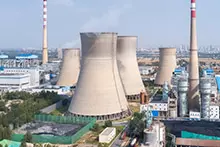
Power
Because coal combustion produces gases that react easily with other substances to form compounds that can be a risk to human health, coal-fired power plants “scrub” these pollutants, particularly sulfur dioxide, from their exhaust emissions through a process called flue gas desulfurization (FGD). The technique, which sprays the gas with water and a sorbent reagent, is essential to control the build-up of corrosive salts and suspended solids absorbed from the gas stream. The process, however, produces a blowdown byproduct that needs to be cleaned before discharge because it contains toxins collected from the gas. In particular, boron, organics, and small amounts of heavy metals, such as mercury and selenium, are damaging for both aquatic ecosystems and terrestrial plants.
In these coal-fired power plants, Wet Flue Gas Desulfurization (WFGD) scrubbers are installed to remove pollutants from the flue gas. The scrubbing process generates slurry containing water, fly ash and dissolved as well as suspended solids. The resulting slurry is separated into liquid and solid streams. While the solids may be cleaned and sold for beneficial reuse as a component in concrete mixes, as a building material, or as a soil amendment in agriculture, the liquid purge from the FGD scrubber is sent to on-site ponds for storage.
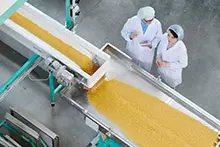
Food and Beverage
In many cases, wastewater produced at the various types of food and beverage production facilities usually requires some type of industrial wastewater treatment. Water from food and beverage sites are usually high in BOD/COD and total suspended solids, as well as many other contaminants. Companies who invest in wastewater treatment technologies and processes to treat the water onsite can lessen the burden to municipal wastewater treatment facilities and reduce sewer surcharges. Fortunately, there are several various technologies that can help facilities meet the required effluent specifications.
In addition to meeting regulatory requirements, these wastewater treatment systems can also contribute to a company's environmental and sustainability goals. For instance, there are advanced anaerobic digestion systems that can degrade organic contaminants, and a by-product of the system is biogas which can be used by the facility to fuel an electric generator as an onsite renewable energy source.

Pharmaceutical Manufacturing
In today’s pharmaceutical manufacturing facilities, effective wastewater treatment is essential. The production of chemically synthesized and biological pharmaceutical products use large quantities of water and a variety of compounds that inevitably find their way into the plants’ effluents in varying concentrations. Implementing an efficient wastewater treatment is often a legal obligation for pharmaceutical manufacturers; increasingly, sustainable development and cost control are also key drivers.
Veolia Water Technologies is able to provide comprehensive wastewater technologies and processes for all types of facilities including chemical synthesis and biological API facilities, as well as finished product facilities (fill and finish). The goal is to help ensure that pharmaceutical wastewater streams are treated to ensure compliance with regulatory agencies while supporting the overall operational objectives of the facility.
What are the various types of industrial wastewater treatment?
Industrial Wastewater Treatment Process
Industrial wastewater is a general term used to define the water by-products caused by manufacturing. Because this definition contains the various forms that industrial wastewater can take, treating it also involves different methods. The execution of industrial wastewater treatment may differ based on the type of facility, the specific pollutants that need to be mitigated, or the type of discharge, such as discharge to the publicly owned treatment works (POTW) or surface water. Though there are many technologies and various processes, below discusses the most common steps utilized for industrial wastewater treatment.
Primary Treatment
The main goal in the primary treatment step of the wastewater process is to remove large solids and equalize the wastewater prior to secondary treatment. Common types of treatment processes in this step include screening, dissolved air flotation (DAF), clarification, and equalization.
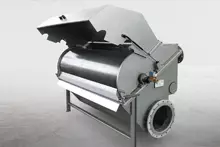
Common Primary Wastewater Processes:
- Screening:
Screening is usually the very first step in any wastewater process. Screening is a mechanical process to remove solids from the influent wastewater prior to further downstream treatment. There are a variety of screen types designed to remove various sized solids. Regardless of the type of screening, the goal is to help protect the system from these solids and improve overall industrial wastewater treatment integrity. -
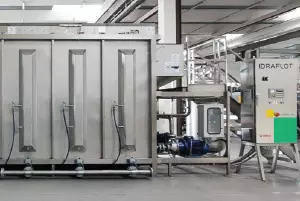
Dissolved Air Flotation (DAF):
Dissolved air flotation (DAF) is a physical-chemical process used to separate solids from the water phase by attaching the solids to fine air bubbles to decrease the density of the particles which float instead of sink. The rising solids are called the “float” and are skimmed off the surface and further processed in the sludge train. The goal of this step is to reduce TSS (total suspended solids) and FOG (Fats, Oil, and Grease) to protect piping and increase wastewater treatment performance within the secondary treatment step. -
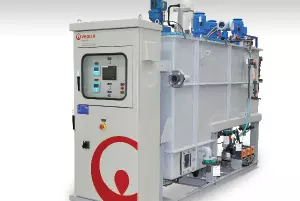
Clarification:
Another common primary wastewater treatment step to reduce TSS (Total Suspended Solids) and turbidity is clarification. Clarification is a physical-chemical process, like dissolved air flotation, but instead of using air to float solids, the process uses coagulants to neutralize the electrical charge of the suspended solids. Removing the electrical charge then allows these contaminants to flocculate within the clarifier and create large clumps. These clumps or flocs have an increased settling velocity which allows them to collect at the base of the clarifier. -
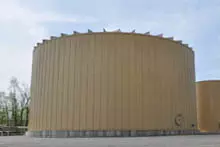
Equalization and pH Neutralization:
Since the characteristics of many industrial wastewater treatment streams have a high degree of variability, equalization and pH neutralization is critical to ensuring success in sequential treatment steps. Equalization allows the wastewater within the system to be more consistent in terms of TSS, loading (BOD/COD), temperature, pH, and flow rate. In this step, the influent can be adjusted to help maximize treatment performance, reduce chemical costs, and make the system easier to operate.
Secondary Treatment
After the initial removal of solids, this next treatment step is where the majority of the organic contaminants are removed from the wastewater. This step primarily utilizes biological wastewater treatment systems to achieve its purpose. Below are a few common wastewater treatment systems that are used in this critical treatment step. These technologies can also be paired together to create a secondary wastewater treatment process that can remove COD/BOD, as well as other contaminants, such nitrogen and phosphorus.
Below are technologies commonly used in Secondary Wastewater Treatment:
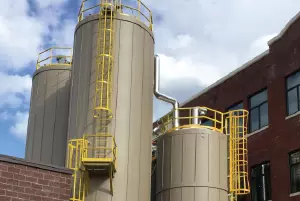
Anaerobic Biological Wastewater Treatment Treatment
Anaerobic treatment is a proven and energy-efficient method for treating industrial wastewater. This technology is used to remove the majority of COD/BOD within the wastewater, which is a common characteristic of industrial wastewater . It uses anaerobic bacteria (biomass) to convert organic pollutants or COD (chemical oxygen demand) into biogas in an oxygen-free environment. Anaerobic microorganisms (specific to oxygen-free conditions) are selected for their ability to degrade organic matter present in industrial effluents, converting organic pollutants into biogas (methane + carbon dioxide) and a small amount of biosolids. The energy-rich biogas can then be used for boiler feed and/or combined heat and power (CHP) to produce ‘green’ electricity and heat.
Common Anaerobic Systems Used in Wastewater Treatment:
- High Rate - Granular Anaerobic Digestion Systems: These small-footprint anaerobic systems utilize specialized granular biomass to consume dissolved organics. Installed inside at the top of the reactor is an advanced three-phase settler. This settler separates the treated water from the produced biogas while allowing the biomass to settle back down into the reactor.
- Medium Rate Systems: These systems treat industrial wastewater streams with significantly high amounts of suspended solids. It is the anaerobic equivalent to the conventional activated sludge digestion system and utilizes suspended biomass to breakdown organics. Another specific medium rate system is an Anaerobic MBR. These systems are paired with UF membranes to provide a very high-quality effluent.
- Low Rate: These systems are similar to medium rate systems. They also utilize a CSTR, but they require significantly longer retention times and can treat waste streams that are high in TSS, when compared to High and Medium Rate Systems.
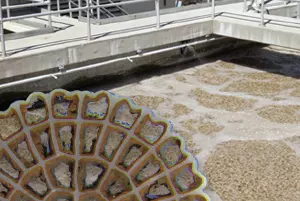
Aerobic Biological Wastewater Treatment
Opposite of anaerobic wastewater treatment, aerobic wastewater treatment is a biological process that uses oxygen to break down organic contaminants and other pollutants like nitrogen and phosphorus.
Common Aerobic Systems Used in Wastewater Treatment:
- Conventional activated sludge: In these systems, organic matter is broken down by aerobic microorganisms in an aeration tank. This forms biological flocs (sludge) which are then separated from the treated water in a sedimentation tank.
- Moving bed biofilm reactor (MBBR): In these types of systems, biofilm grows on carriers suspended and circulated in an aeration tank. The carriers create a large total surface area in a very compact footprint, when compared to conventional activated sludge.
- Membrane bioreactor (MBR): These aerobic systems utilize submerged membranes in the aerobic reactor. As a result, it combines the advantages of an activated sludge system with advanced membrane filtration.
- Lagoons: In an area where there is a large amount of land, wastewater can be sent to a lagoon system and aerated to biologically consume the organic contaminants.
Click Here to Learn More About Biological Wastewater Treatment
Tertiary Treatment / Polishing
In many industrial wastewater treatment plants, tertiary polishing is needed to further remove TSS and other contaminants. Tertiary treatment is used to further treat the wastewater so the facility is able to consistently meet stricter discharge limits, especially if discharging to surface water.
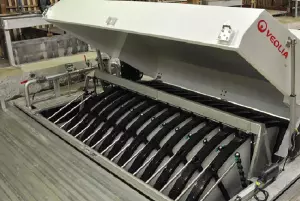
Clarification and Discfiltration (Microscreens)
Solids that are created in the biological processes may need to be removed prior to discharge. Two common methods to remove these solids is clarification or discfiltration. Clarification uses coagulants to create floc which settles inside the clarifier and is removed. Discfiltration systems utilize fine mesh screens to mechanically remove solids and can act as a final polishing step. Regardless of the technologies used, the goal of these technologies is to remove any remaining TSS and in some cases, precipitate nutrients. When dosed with proper chemical formulations, they can be used for metals removal in the treatment of wastewater at certain industrial sites, such as mines.
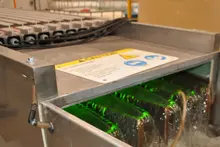
Disinfection
Disinfection is a process that removes pathogens within the wastewater effluent prior to discharge. This treatment step is commonly used if an industrial site is discharging its treated wastewater to the environment. There are several various types of systems that are used for disinfection. Two types of technologies that are commonly used for this step are UV (Ultraviolet) and Ozone systems. UV systems use short-wavelength ultraviolet light to inactivate any microorganisms. Ozone is another commonly used disinfection technology at industrial water treatment facilities. When ozone gas is dissolved into water, it creates a chemical reaction that produces a broad spectrum biocide that effectively destroys pathogens.
Specialty Wastewater Technologies
Depending on the economic and environmental drivers of a wastewater project, there is the possibility to include specialty technologies that can allow for water reclamation or byproduct recovery. Two types of wastewater systems that can support these applications are membrane technologies and evaporation technologies.
Membrane Technologies
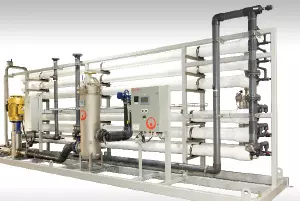
These technologies have gained popularity as an effective way to produce high purity water. These systems vary based on the membrane types and the pressurization of the influent. Four common categories of membrane filtration include: microfiltration, ultrafiltration, nanofiltration, and reverse osmosis. Inside these units, there is a physical membrane barrier that captures suspended solids, while allowing water to pass through the membrane. In more intensive membrane systems, such as nanofiltration or reverse osmosis, these systems operate at higher pressures and separation occurs through the process of diffusion through the membrane. As a result, nanofiltration and reverse osmosis systems can produce higher purity water by removing up to 99% of salts, dissolved organics, bacteria, and viruses. Click Here to Learn More about Membrane Systems
Evaporation Technologies
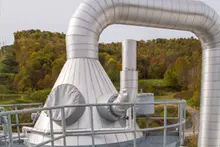
Evaporators are sometimes installed within wastewater systems when companies are trying to reduce the amount of liquid waste, or achieve zero liquid discharge (ZLD) or zero liquid waste (ZLW) for their particular wastewater treatment facility. Evaporators simply convert liquid water to water vapor while concentrating the solute. These systems are designed to operate at high levels of energy efficiency to achieve evaporation. More so, in some cases, the concentrate could be a potential byproduct recovery source, while the distillate can be reclaimed and reused within the industrial facility.
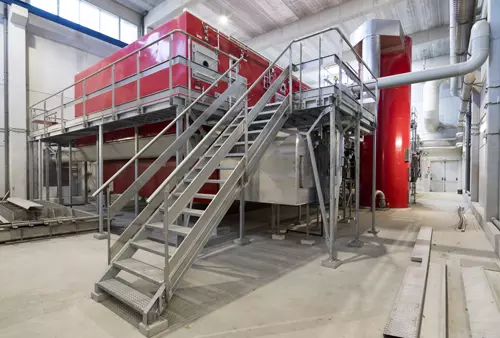
Sludge and Biosolids
In almost all industrial wastewater treatment plants, sludge is produced. Sludge is the precipitated and filtered solids from the system that were collected and removed fro during the primary, secondary, and tertiary wastewater treatment steps. In most cases, sludge is dewatered using mechanical equipment, such as a centrifuge or filter press. Dewatered sludge is normally taken to a landfill, incinerated, or in some cases—land applied as a fertilizer or sold as animal feed.
Key Technologies

Biothane® High-Rate Anaerobic Treatment System
Anaerobic granular wastewater treatment process designed to effectively remove COD/BOD, while simultaneously generating green energy as a by-product
Learn More
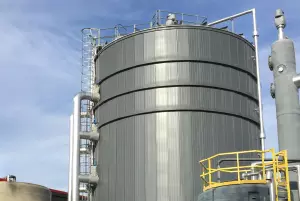
Memthane® Anaerobic Membrane Bioreactor (AnMBR)
High-strength wastewater treatment process that reduces BOD while producing a high-quality effluent that can be reused or discharged directly to sewer
Learn More

AnoxKaldnes™ MBBR (Moving Bed Biofilm Reactor)
High-performance aerobic wastewater treatment technology engineered to effectively remove BOD/COD and nitrogen
Learn More
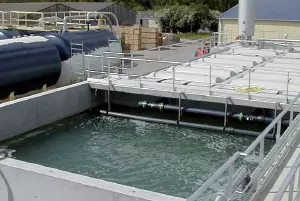
NEOSEPTM MBR Immersed Membrane Bioreactor
Activated sludge treatment with immersed membrane filtration to produce a high-quality permeate
Learn More

Actiflo® High-Rate Clarifier/Softener
Small-footprint technology in which water is flocculated with microsand and polymer to increase settling velocity for the removal of more than 99% of TSS
Learn More

Hydrotech Drumfilters & Discfilters
Filtration technology that uses woven media panels to remove suspended solids greater than 10 microns
Learn More
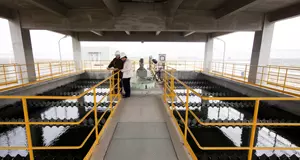
Multiflo® High-Rate Softener
Proprietary softening process that incorporates chemical precipitation with sludge thickening to produce an effluent with low concentrations of scale-formers and a highly concentrated sludge that can be easily dewatered.
Learn More
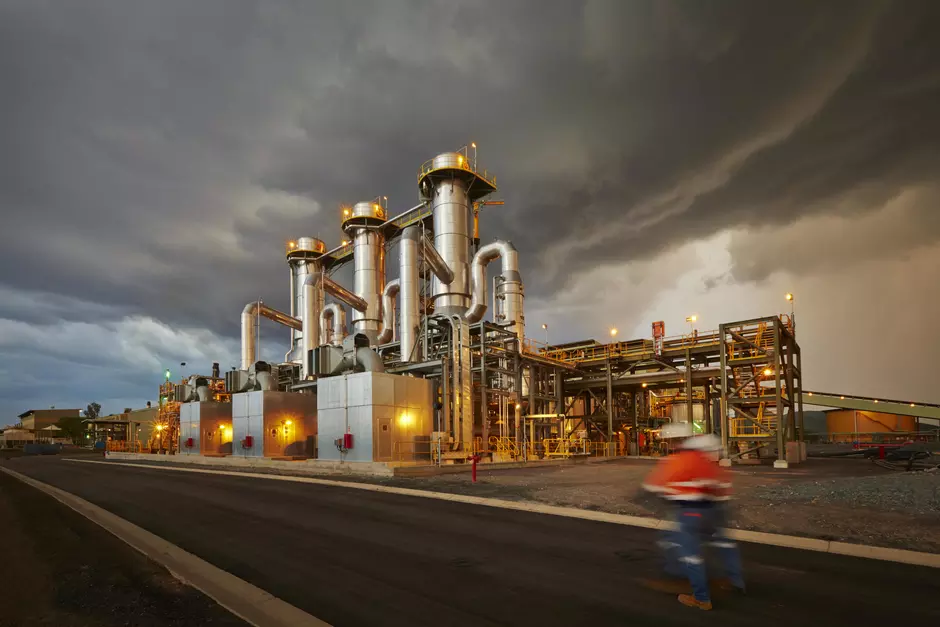
HPD® Evaporation & Crystallization
Evaporation and crystallization technologies to recover valuable products and byproducts. Brine concentration and product precipitation. Crystallizers for product purification.
Learn More
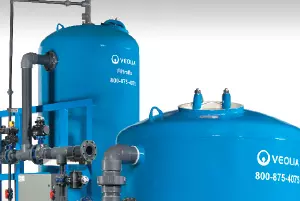
FILTRAFLO™
Efficient equipment designed to remove particles, odors, and organics to improve intake water quality for use in utilities and manufacturing
Learn More

IDRAFLOT® Dissolved Air Flotation (DAF)
An innovative and effective wastewater treatment technology based on a unique modular design to remove suspended solids and FOG (fats, oils, and grease)
Learn More
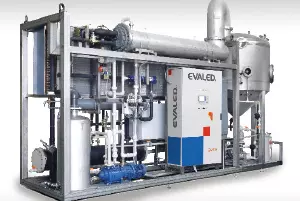
EVALED® Evaporators
Highly reliable and cost-effective evaporation technology designed to reduce wastewater volume, produce a high-quality, reusable distillate and recover valuable by-products
Learn More
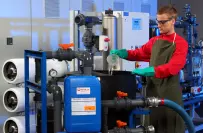
Hydrex Chemicals
Wide range of proprietary water treatment chemicals for use in wastewater applications
Learn More
Featured Resources & Information



